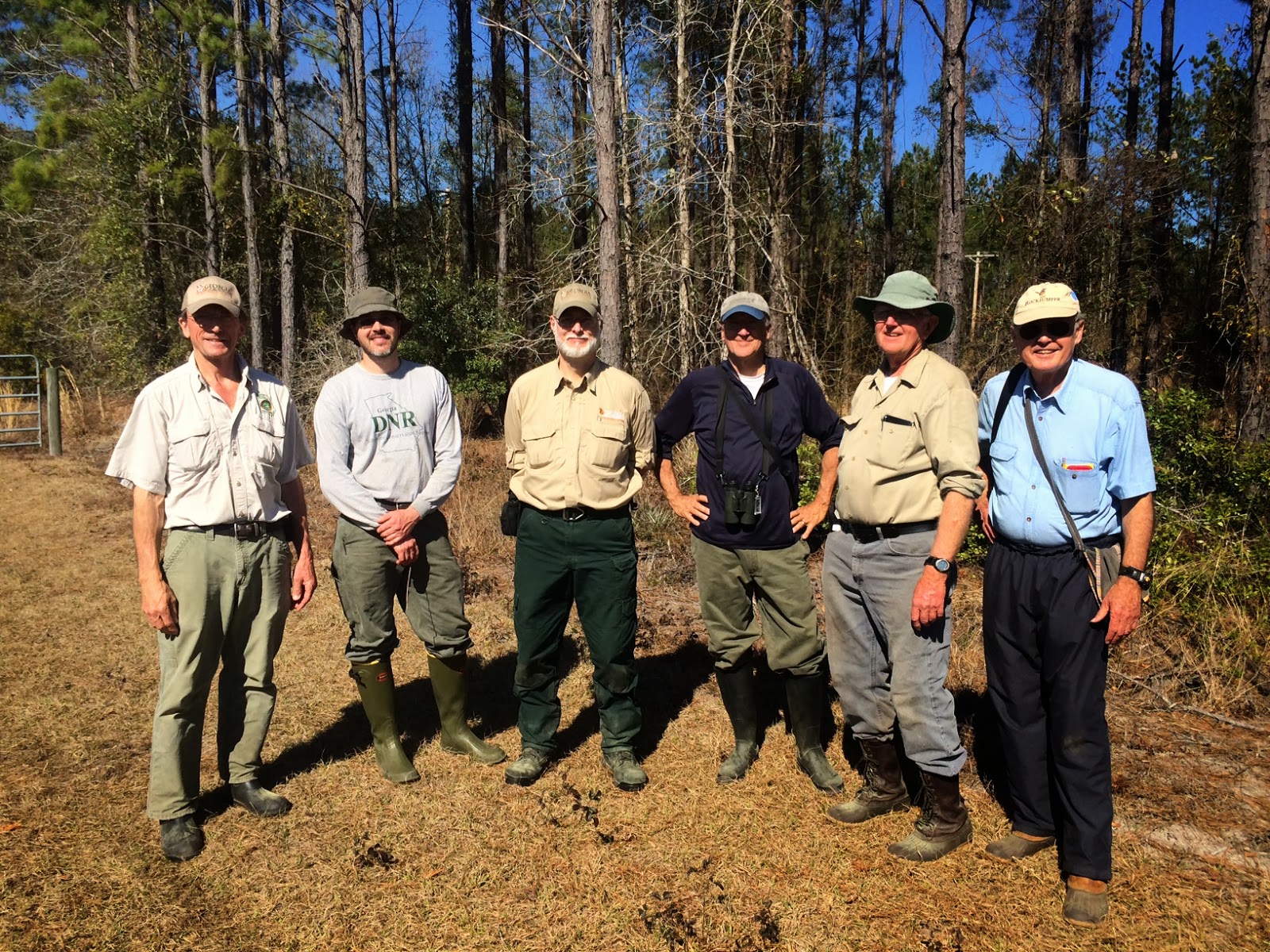I cut west/inland to search for Snail kite today
I have done a tone of riding to finally reach what I have been calling in my own head "The Bird Zone". At this time of year, most of the Florida specialties collapse into the southern part of the state. It has taken a TON of riding to get this far south, but today I started to reap the rewards of this riding. I found several Florida specialities including my lifer Snail kite (#213). I have looked for this bird on a number of previous occasions only to be denied each time. Until today, this was certainly one of my nemesis birds. I actually found 4 birds at Loxahatchee Slough (not the NWR) today. I think there were 2 adult males, 1 adult female, and 1 juvenile. As I said, its the first time I've seen these birds in the field, so I am quite possibly mistaken. I was able to photograph 3 of these birds. The midday light was tough, but I think I made it work in the last 2 shots.
**Click thumbs for bigger images**
Juvenile or Female Snail Kite
Very heavy crop of adult male Snail kite -
banded no less!
An adult-ish Snail Kite -
Not completely charcoal yet
The habitat where I found the kites. This was taken a bit
later in the day so the colors are nicer. The kites didn't
come in close like they did earlier in the day - bummer.
Snail kites are a federally endangered species. As of 2014, there are thought to be around 400 breeding pairs left in the state. There are, however, additional populations of the birds in Central and South America. The Snail kite feeds almost exclusively on Apple snails which are found throughout South Florida in freshwater environs. As humans have altered these freshwater habitats, the population of Apple snails has also fluctuated. As is always the case, these seemingly small perturbations at the bottom of the food chain are magnified as one moves up towards the apex predators like the Snail kite. Thus, the fate of the Snail kite is inextricably tied to the status of the Apple snail. There is some evidence that they will eat other types of snail which may benefit them moving forward. You can read about that here. The long, hooked beak of the kite has evolved as a tool to pry captured snails from their shells. This is certainly a very cool bird.
As for other birds, there certainly was not a shortage of them. I also tallied Crested caracara (#210) and Northern rough-winged swallow (#211) on my ride west this morning (I took this big detour west to get away from the coast and into the freshwater areas preferred by the Snail Kite). Limpkins (#212), and 3 Swalow-tailed kites (#214) cruised right over my head as I was looking at the first of the 4 Snail kites! Since I had the camera out for the Snail kites, I was able to capture one of the Swallow-taileds as it flew over. These birds are some of the first spring migrants to return to South Florida (Snail kites are permanent residents). The last new bird of the day was a bit of a surprise as I heard a Barred owl (#215) hooting away in mid afternoon.
The aptly named Swallow-tailed kite
Today turned out to be a magnificent day. The weather was perfect, and I did a paltry 60 miles on the bike (50 from Stuart to North Palm beach, 7 looking for Snail kites, and 3 for a water bottle I forgot at a rest stop). There will be much more birding in the next few days, and I expect the new species to keep piling up. Finding the kite today is a a huge weight off my shoulders. Given how hard I have previously looked for this bird and failed to find it, nailing it down so easily today is a huge bonus for me. Tomorrow I am going to head to the Green Cay and Wakodahatchee Wetland areas which are located a bit south of here.
There has beens some good thinking happening on the bike as well, and I will share some of these thoughts as they develop a bit more. Most of what I think about centers on how I want to construct my life moving forward. As these thought move beyond their embryonic stages I will be sure to share them.
Loggerhead shrike bonus shot!






















































